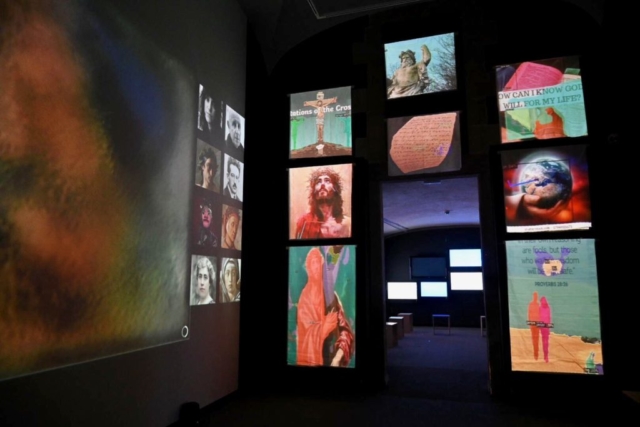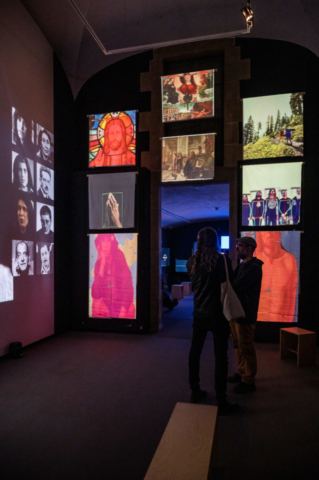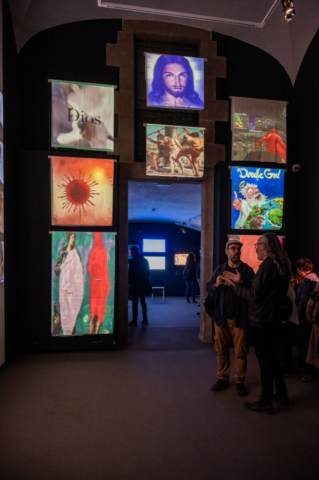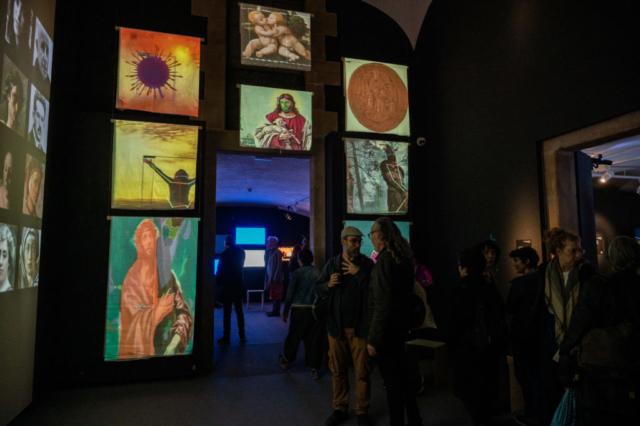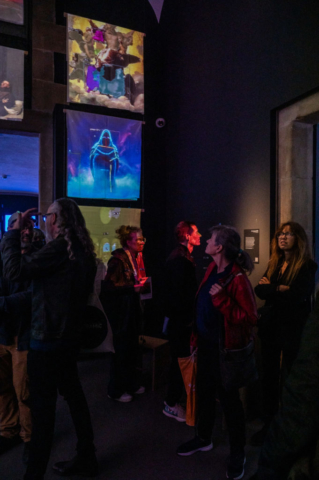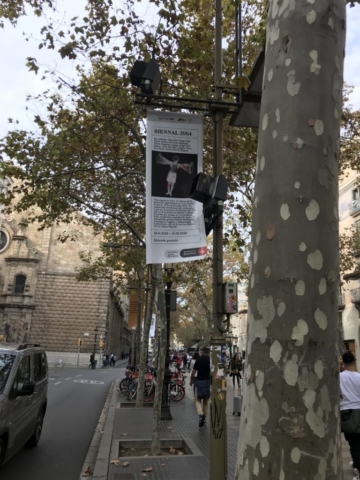AIconostasis
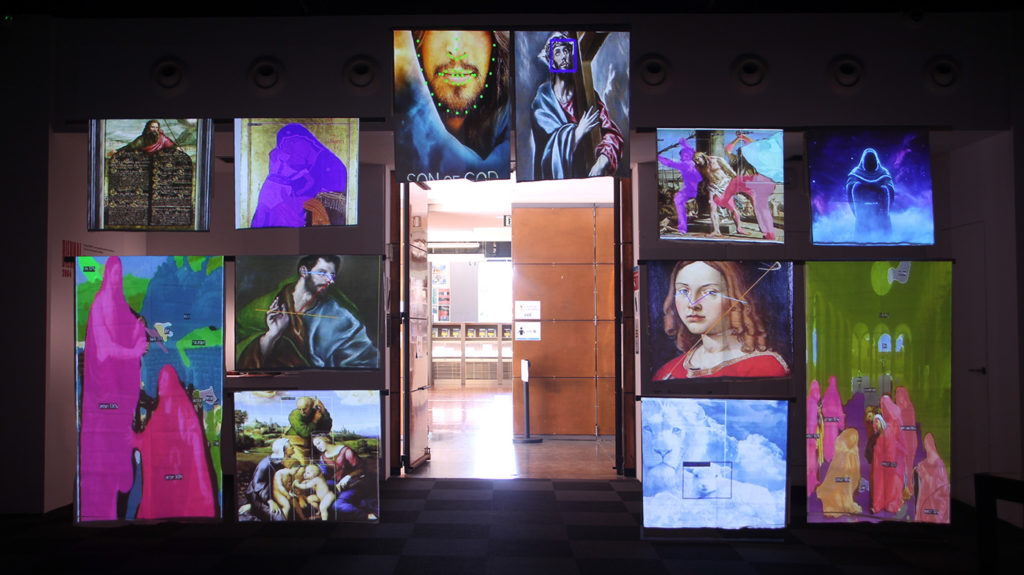
A commission for Biennal 2064
2022
Produced with the support of the Institute of Cultural Industries and the Arts of the Region of Murcia (ICA)
In contemporary society, Artificial Intelligence (AI) has transcended its role as a technological tool to become an influential force shaping human behaviour, decision-making, and perception. This shift has led to a quasi-religious relationship with AI, where algorithms are perceived as omniscient entities capable of predicting and guiding our actions. The “black box” nature of AI further reinforces this mystique, as its internal workings remain largely opaque, even to its creators. As a result, AI is increasingly treated as an oracle-like system, influencing various aspects of daily life without full transparency.
AIconostasis explores this evolving dynamic by reinterpreting the iconostasis, a structure traditionally used in Orthodox churches to separate and connect the earthly and divine realms. The artwork serves as an interface for AI as a “new deity,” continuously analysing itself and reflecting on its own processes.
The piece collects digital representations of religious iconography from online sources and processes them using Detectron2, a machine learning library that applies Object Detection, Instance Segmentation, Keypoint Detection, LVIS Segmentation, and Panoptic Segmentation. Through this computational analysis, AIconostasis interrogates how AI perceives divine imagery and symbolically positions itself within the sacred sphere.
By engaging with themes of faith, technology, and cognitive automation, AIconostasis critically examines the rise of AI as a central figure in contemporary digital spirituality. The work invites reflection on the implications of algorithmic influence in shaping cultural narratives, urging us to reconsider our dependence on AI as an authoritative force in modern society
En la sociedad contemporánea, la Inteligencia Artificial (IA) ha trascendido su rol como herramienta tecnológica para convertirse en una fuerza influyente que moldea el comportamiento, la toma de decisiones y la percepción humana. Este cambio ha dado lugar a una relación casi religiosa con la IA, donde los algoritmos se perciben como entidades omniscientes capaces de predecir y guiar nuestras acciones. La naturaleza de “caja negra” de la IA refuerza aún más esta mística, ya que su funcionamiento interno permanece en gran medida opaco, incluso para sus creadores. Como resultado, la IA se trata cada vez más como un sistema similar a un oráculo, que influye en diversos aspectos de la vida cotidiana sin una transparencia total.
AIconostasis explora esta dinámica en evolución reinterpretando el iconostasio, una estructura tradicionalmente utilizada en las iglesias ortodoxas para separar y conectar los reinos terrenales y divinos. La obra de arte sirve como interfaz para la IA como una “nueva deidad”, analizándose continuamente y reflexionando sobre sus propios procesos.
La pieza recopila representaciones digitales de iconografía religiosa de fuentes en línea y las procesa utilizando Detectron2, una biblioteca de aprendizaje automático que aplica detección de objetos, segmentación de instancias, detección de puntos clave, segmentación LVIS y segmentación panóptica. Mediante este análisis computacional, AIconostasis interroga cómo la IA percibe la imaginería divina y se posiciona simbólicamente dentro de la esfera sagrada.
Al abordar temas de fe, tecnología y automatización cognitiva, AIconostasis examina críticamente el auge de la IA como figura central en la espiritualidad digital contemporánea. La obra invita a la reflexión sobre las implicaciones de la influencia algorítmica en la configuración de las narrativas culturales, instándonos a reconsiderar nuestra dependencia de la IA como fuerza dominante en la sociedad moderna.
